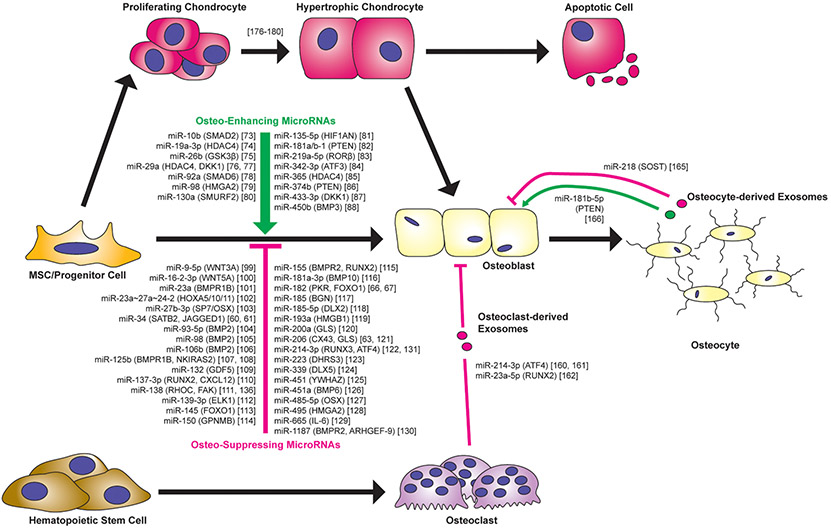Fig. 2.
MicroRNAs regulating osteoblast differentiation and function. Listed are the osteo-enhancing and osteo-suppressing miRNAs included in Section 3 in addition to other miRNAs discussed in Sections 2 and 4 of this review. Confirmed miRNA targets are shown in parenthesis. Note that while long bone formation involves endochondral ossification, via formation of hypertrophic chondrocytes, all studies identifying functional miRNAs utilized in vitro osteogenesis assays that mimic intramembranous ossification whereby stem/progenitor cells differentiate directly to osteoblasts. Also shown are miRNAs present in exosomes of osteoclasts or osteocytes that may function in regulating osteoblast differentiation or function. See Tables 1 and 2 for a list of the various stem/progenitor cell types used to determine the function of the majority of miRNAs listed in this figure. Note: not included in this figure is the reference to a report suggesting that let-7a-5p, present in osteoclast-derived exosomes, may enhance hypertrophic chondrocyte differentiation [164]. Note: while osteoblasts certainly secrete exosomes, we did not identify published studies reporting exosome-derived miRNAs from osteoblasts directly regulating other specific bone-related cell types. Therefore, we did not include osteoblast-derived exosomes in this figure given that we cannot support this depiction with a specific published study.

